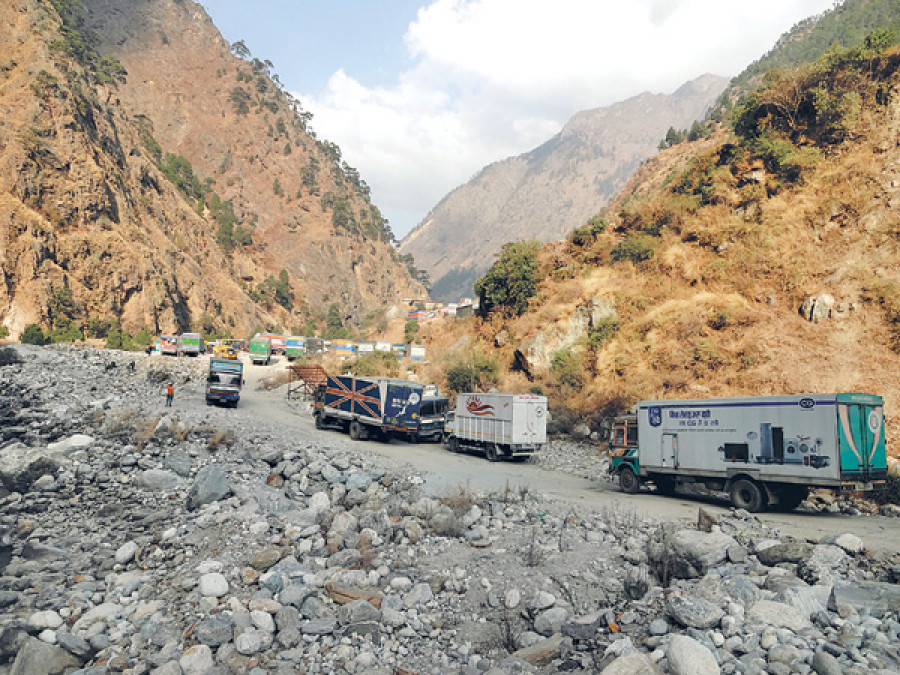Money
Construction of Rasuwa dry port on hold since virus outbreak
The depot is slated to be ready by May 2022, but only 10 percent of the work has been completed so far.
Krishana Prasain
Construction work on Rasuwa dry port on the northern border with China has been on hold for a year as workers stayed away due to the Covid-19 pandemic.
The inland container depot is slated to be ready by May 2022, but only 10 percent of the work has been completed so far.
Ashish Gajurel, executive director of the Nepal Intermodal Transport Development Board, said that the Chinese contractor had not returned to work for a year citing the coronavirus outbreak.
The board has repeatedly asked the construction company for an updated plan of the remaining tasks, officials said.
“We have not heard anything from them,” Gajurel told the Post. "Until the Chinese contractor submits a new plan, the board cannot say when work will resume, when the project will be completed and how much it will eventually cost."
On May 12, 2019, the board signed an agreement with Tibet Fuli Construction Group Company Limited to build the inland container depot at Timure in Rasuwa district which straddles a major trade route with China. The Chinese company was to complete the facility in 30 months.
According to Gajurel, the contractor had said that they would return to work after the staff had been vaccinated against Covid-19, but the board has not received any word from them after that.
"They have probably not returned to work as most Nepalis have not received the jabs," he said. "The dry port should be ready within one and a half years after construction work starts again."
The dry port is being constructed as a gift by the Chinese government with an investment of Rs2.2 billion.
It will have space for 350 container trucks. There will be a warehouse, parking lot, customs building, post office and quarantine facility.
Gajurel said that the construction of the dry port would facilitate import and export trade between China and Nepal. “It will promote commerce with China,” he added.
Customs clearance and storage of goods will be systematised after the dry port opens.
“Traders will be able to save money because customs clearance will be faster,” he said. “As customs clearance will be processed from a single infrastructure, it will reduce expenses and minimise hassles for traders,” he said.
The dry port is being built on 165 ropanis of land and is situated 2.5 km from the Nepal-China border.
In April 2015, Nepal and China signed a memorandum of understanding to construct the dry port. The board in association with the Architectural Reconnaissance and Design Institute of the Tibet Autonomous Region finalised the layout plan in 2016.
The importance of the Rasuwagadhi customs point as an alternative gateway to China was highlighted when the Arniko Highway linking the Chinese border further east was cut off due to landslides and flooding of the Sunkoshi River in August 2014.
The dry port in Rasuwagadhi is the second of its type that the northern neighbour is constructing for Nepal. Poor infrastructure on the Nepal side is a hindrance to trade through Rasuwagadhi, and China has been helping to improve the facilities.
In January 2012, during the visit of the then Chinese prime minister Wen Jiabao, China agreed to support Nepal in upgrading dry ports at six major customs points along the northern border including Rasuwagadhi.
According to the Department of Customs, trade with China was valued at Rs207.62 billion in the fiscal year 2018-19.
Nepal imported Rs205.51 billion worth of goods from China and exported goods valued at Rs2.10 billion to the northern neighbour.




 6.73°C Kathmandu
6.73°C Kathmandu















